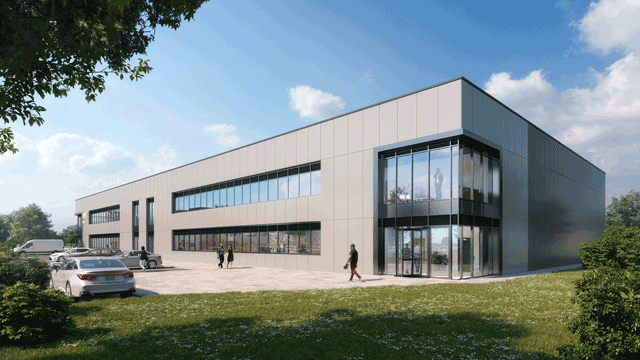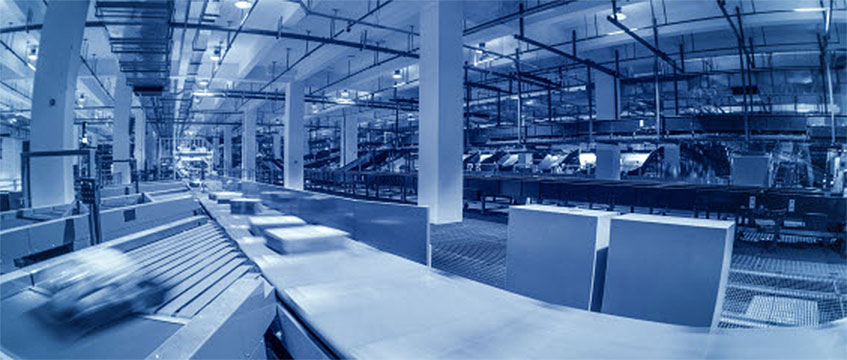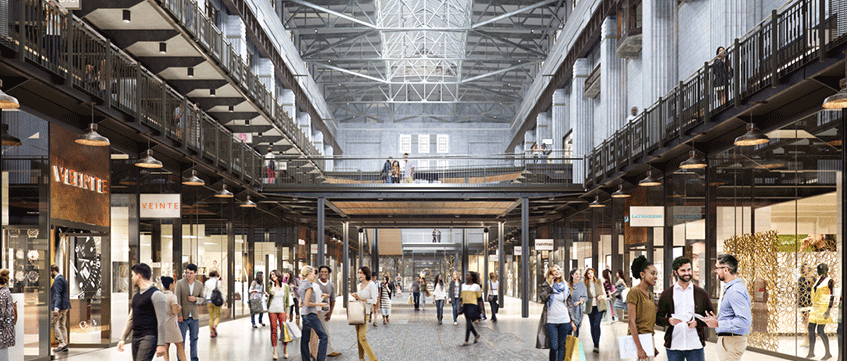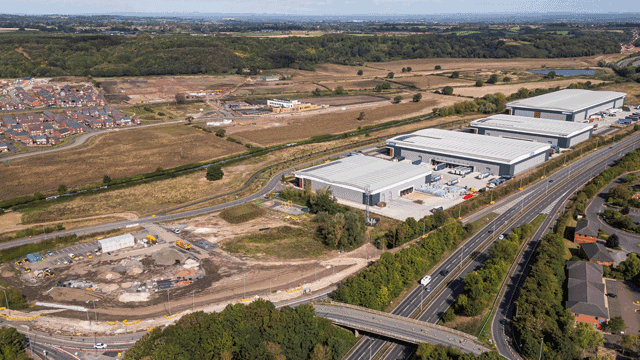Industrial and logistics looks set to remain one of the top performing commercial property sectors in 2019. But with increasing consumer demand meaning more warehousing is needed, a labour shortage imminent and the still unknown effects of Brexit on the supply chain, how can we ensure that it remains a top performing sector in the longer term?
Experts from across the sector recently took part in a special Shedmasters roundtable to try to uncover the answers to that question and to debate the major issues affecting the industry. Here we share some of the highlights.
The panel
- John Clements, European development director, Verdion
- Kester Purslow, senior director, RPS
- Nigel Rowe, European business development director, Mountpark
- Alex Verbeek, managing director, Gazeley
How are you preparing for Brexit?
Nigel Rowe: “We’re listening to our customers. We’re looking at what they are doing, listening to what they’re saying they want to do and how they’re planning for that date. We have a pan-European view, so we have people worrying about that from both sides of the English Channel. And I think what the answer is and what they’re saying is: “We’ll let that date come and see what happens.”
John Clements: It’s very hard to know the impact. Among the most obvious impacts at the moment is customers just delaying decisions for longer-term leasing. But there is certainly a raft of interest in much more short-term letting. There is some opportunity there if that’s what you’re willing to consider for some of your better clients.
It’s very hard to know what the long-term impact will be, so we’re just waiting and seeing like everybody else and we will react accordingly.
Alex Verbeek: Normally in times of change one might argue that past performance is a good indicator of future performance, and that is quite possibly too bold a statement to make at this point. But what has been interesting over the two years since that decision is that we’ve had record take-up in 2016, 2017, 2018 and this year started strong.
I can’t pretend to know the full outcome, but I think being flexible – which may well involve some shorter or more flexible lease structures and being adaptable and ready for change – is the best position we can be in, and we feel like we’re in that place as a pan-European business.
Are you worried about a lack of labour?
AV: There is generally a challenge with labour in the sector and that is that there is not enough of it. We’re talking particularly for those third party logistics operators that are serving retailers or for retail customers. We’re talking about a very cyclical business that peaks at seasonal events – Easter, Valentine’s Day Christmas. And when it peaks, it peaks to about fourfold what would otherwise be its day-to-day employment base, so that is an enormous amount of people that are sitting available, perhaps transient, perhaps contracted, just in those peak periods, so there is generally a labour issue.
In the context of Brexit, there is potentially a greater shortage of immediately available labour for logistics. But we have seen a change in the way warehouses are being operated, in particular through automation, which is changing the labour profile in the logistics sector more generally. What that’s doing is not diminishing the quantum of labour, but it is upskilling it.
JC: Without a doubt, the major concern at the moment is the availability of skilled labour for warehouse operations. We’ve been quite fortunate that at our largest UK scheme, iPort in Doncaster, there is still a good pool of strong labour available. But it’s becoming harder and harder for clients across the country, particularly in the Midlands and South East, to get the staff they need. Brexit is not going to help that at all.
It’s not a problem that’s going to be solved quickly and it will be interesting to see how the government reacts.
NR: All of our collective customers are not making any move without doing very careful employment studies.
Another interesting factor, after a conversation with some central European colleagues, is that it is the same in the markets we think of as being full and open with large numbers of employable labour. Central Europe has got its tight spots and its concerns over labour movements, too. It’s very, very important for everybody throughout all the markets in Europe right now.
What is driving take-up in the sector?
AV: It is the ongoing increase in online retail demand as a proportion of overall demand.
If you look back over the course of the last decade or so, the overall quantum of take-up and demand from the retail sector has increased. And then over the course of the past 10 years we’ve seen a gradual increase in the percentage of that retail demand from the online space, as opposed to traditional high street retail.
We’ve not seen uncertainty trickle into or impact on the growth of online retail. That’s really what’s driven that record take-up and we expect that to remain strong in 2019.
What I do see potentially is the dynamics of the market changing in the next couple of years and therefore an impact on availability, supply, and rental growth. I don’t think the underlying quantum of take-up is likely to move substantially, certainly not back to pre-2013 levels.
JC: Demand is strongly driven by e-commerce. I think it will continue for some time to come, but you know all good things have to come to end at some point, so we should be a little cautious that growth won’t continue forever. There will be saturation point and my biggest fear would be an economic downturn. That would really turn off the taps on the development pipeline, and I think that’s what we just have to be cautious of.
At the moment there’s a reasonably good equilibrium in the amount of space coming out and the amount of take-up. But if there was a big disparity between the amount of speculative space coming through and the amount of take-up then we might get into a slightly more overheated situation in the market.
How are you evolving for the needs of occupiers?
AV: The key point is to be flexible, to be able to respond to change quickly, and I mean that in terms of physical buildings being delivered, building specification, being open-minded and flexible and adaptable to the needs of those evolving customers.
We have a building in Danbury which we leased to Amazon and when we started the negotiations it was to be taken for a very specific purpose in the company’s supply chain. Six weeks later, when we exchanged and contracted with Amazon, it was repurposed for a completely different use. Now that is a big business that can adapt to those sorts of changes, but it just shows how quickly things are evolving.
And likewise we delivered a number of built-to-suits last year, but one in particular comes to mind where we went through 125 change orders as we delivered the facility – and that was through a 25-week build period.
Kester Purslow: For us, building in flexibility is absolutely key. Far more speculative buildings are now being retrofitted in terms of mezzanine, for example. Online is driving more multi-tier, high-throughput mechanical handling systems, which we weren’t seeing before. So this sort of profile of how spec sheds are being redesigned to accommodate e-commerce is changing.
NR: You have to be flexible in the sense that these are long-term investments, investment properties that we’re putting a long-term future into, but equally you need to have the specifics that are needed to run the operation in.
How are you using tech in your business and what impact and/or benefit is it having on the industrial and logistics market as a whole?
AV: We do all of our building design now in BIM – building information modelling – so it’s all done in 3D. It provides a better interface between our customers’ systems and our own and enhances efficiency for things like clash detection, so reduces waste. It also has a number of other advantages. We are doing our best to harness as much of that as is available.
KP: We have a bespoke VR team. So in our office we have three guys who are specifically dedicated to virtual reality. Because our buildings are designed in 3D, we drop them into VR and then we can take those to the client or they can come to us and ‘walk’ through the building. With the goggles they can physically see how the building is being designed, they can make changes in a real-time environment and they can choose everything from how the toilet finishes look to how the office space works, and all of that can then be fed back into the design of the building.
In terms of the way buildings are designed, technology is really pushing us quite hard. It is making the design process far more efficient in terms of how we can produce drawings.
JC: I think our clients, the occupiers themselves, are the real leaders in tech – companies like Amazon. They are really at the very forefront and we are learning a lot from them and we’re learning to implement their technology in the buildings we develop for them.
NR: All this adds up to huge increased power requirements. You talk to any occupier, be they a manufacturer or simple logistics operator, they now need phenomenal levels of power to be tied up in reserve within these buildings. That’s probably one of the single most important factors that is the end result of the robotics and the tech element of the buildings that we’re now putting together.
What is the industrial and logistics community doing to be more diverse and inclusive?
NR: I think it’s a very important question. The industry is now a lot more sophisticated and a lot more inviting. That under-representation of women in our business has been a big thing that I think a lot of companies are working very hard to address.
JC: There has been a historic reason for the lack of female representation in the business throughout the whole surveying culture itself. I think that is changing and has been changing probably over the past 10 to 15 years. The logistics/warehousing sector is probably the last bastion which probably needs to do a little bit more to encourage people.
I think the success of the industry over the past five years will naturally encourage more people generally to want to be in the sector, and hopefully more females.
KP: For us it’s more of a generational change. Certainly far more graduates coming through now are female, which is great. I think we do have a far more diverse mix in our office than we did five or 10 years ago.
AV: At Gazeley, our UK team is 40% women and we sponsor Women in Industrial Property and will continue to seek to represent and enhance diversity in the sector. It’s fundamentally important.
What do you hope 2019 holds for the industrial and logistics sector?
JC: My hopes and dreams are quite simple: let’s hope for a very smooth and swift resolution to the Brexit question so the markets can continue growing and hopefully see some strong economic growth coming through across Europe and then, hopefully, we can all have a successful few years in the logistics business.











